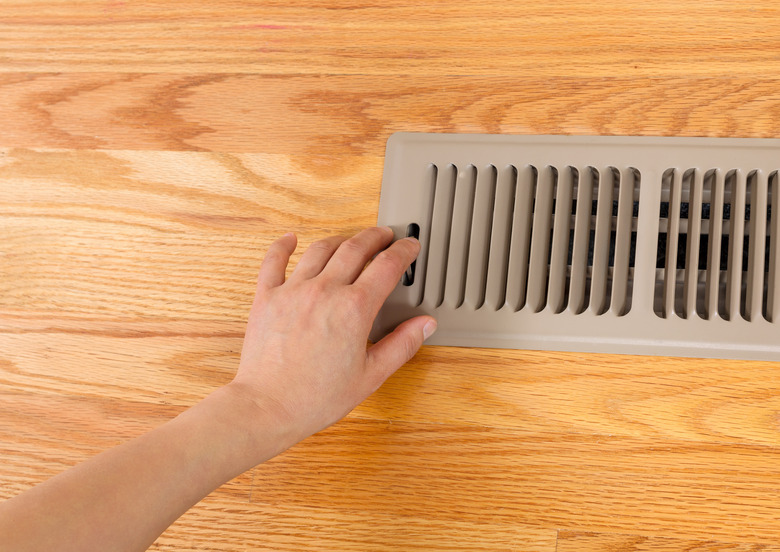How To Find Things Dropped In Air Vents
We may receive a commission on purchases made from links.
Sometimes your home's central air conditioning system's ductwork can become a black hole for lost items, especially in homes with children and pets. Unlike losing something in a black hole, though, these items are not lost for good. With a little ingenuity and know-how, you can safely and easily retrieve those hidden treasures using just a few tools.
Gaining Access to the Ducts
Gaining Access to the Ducts
Gaining access to the inside of your home's ductwork is fairly easy. Most vents that are on the floor are simply dropped in and can easily be lifted off the floor. In some cases, you may need to carefully pry them up. If your vents are on the wall, you'll need a screwdriver to remove them. Place the screws in a safe location and be careful not to lose them.
The Reach-in Method
The Reach-in Method
One method of retrieving lost items is simply reaching in and grabbing them. The inside of your ductwork can have sharp screws and edges, though. So wear good gloves and cut-resistant sleeves to protect yourself from cuts while you're rooting around inside the ductwork.
Using a Wire Hanger
Using a Wire Hanger
A wire hanger is a very useful tool in many household DIY projects. This method of retrieval is fairly simple and will help you reach a little farther than your arm can reach safely. Start by straightening the arms of the hanger, leaving the hook intact; then reach in and try to hook your items to pull them out. If you need to reach a little farther, untwist the hanger to gain some more reach.
The Suction Method
The Suction Method
For this method, it's recommended that you use a shop vacuum rather than your home's regular vacuum. The reason for this is the many negative outcomes that can be worse than losing your cat's favorite toy in the ductwork. If an item gets lodged in your central vacuum system, it can plug the piping that runs throughout your home. A conventional stand-up vacuum can easily get plugged as well, so its use isn't recommended either.
A shop vacuum, on the other hand, has a canister that can collect the items, making them easy to retrieve without clogging anything up. If you don't own one, now might be a good time to get one. You won't need a big, expensive mega-horsepower vacuum to succeed with this method; a little 1- or 2-gallon model will do the trick. Besides, the smaller vacuum hose will fit into smaller ducts and around corners inside the ductwork.
Using a shop vacuum for this is pretty straightforward. Turn the vacuum on, put the hose in the duct, and move the hose around the inside of the duct. Don't turn the vacuum off until you've pulled the hose completely out of the duct. If an object won't fit through the hose, it may still be stuck to the end of the hose by suction, which will help you retrieve the item. Whatever does make it through the hose will be end up in the canister for easy retrieval.
When to Call a Professional
When to Call a Professional
If you're comfortable working on your ductwork, opening up the ends of the main trunk line is another option. Just be sure to seal them as well as or better than they were before you started. If all these attempts fail, it might be time to call in either an HVAC professional or a ductwork-cleaning company.
